
Saint Matilda was Duchess of Saxony from 912 and German queen from 919 by her marriage with Henry the Fowler, the first king of the Ottonian dynasty. Upon her husband's death in 936, she founded Quedlinburg Abbey to commemorate the late king. Matilda lived to see Western Imperial rule restored when her eldest son Otto was crowned Holy Roman Emperor in 962. Her surname refers to Ringelheim, where her comital Immedinger relatives established a nunnery about 940.

Neustadt (Aisch)-Bad Windsheim is a Landkreis (district) in Bavaria, Germany. It is bounded by the districts of Würzburg, Kitzingen, Bamberg, Erlangen-Höchstadt, Fürth and Ansbach, and by the state of Baden-Württemberg.

Neustadt an der Aisch is a small town of around 12,000 in the northern part of Bavaria (Germany), within the Franconian administrative region Middle Franconia. It is the district town of the district Neustadt (Aisch)-Bad Windsheim.

Niedenstein is a small town and an officially recognized climatic spa in the Schwalm-Eder district in northern Hesse, Germany.

Kirchberg is a town in the Zwickau district, in the Free State of Saxony, Germany. It is situated at the western end of the Ore Mountains, 11 km south of Zwickau.
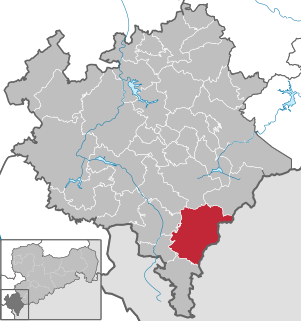
Markneukirchen is a town in the Vogtlandkreis district, in the Free State of Saxony, Germany, close to the Czech border. It lies in between the Erzgebirge and the Fichtelgebirge in the Elstergebirge, 24 km (14.9 mi) southeast of Plauen, and 14 km (8.7 mi) northeast of Asch.

Kirchberg is a municipality in the administrative district of Emmental in the canton of Bern in Switzerland.

Großschönau is a municipality in the district Görlitz, in Saxony, Germany located in the Cross-border region with the Czech Republic. It used to be a famous Upper Lusatian center of Damask fabric production until the end of the 1980s. Since then it has turned into an area of tourism.
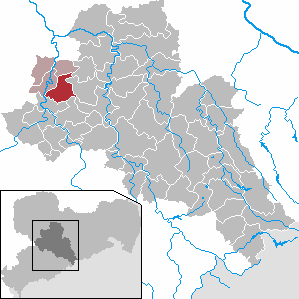
Seelitz is a municipality in the district of Mittelsachsen, in Saxony, Germany. It is part of the administrative partnership Verwaltungsgemeinschaft Rochlitz based in the eponymous town.

Erlbach is a village and a former municipality in the Vogtlandkreis district, in Saxony, Germany. Since 1 January 2014, it is part of the town Markneukirchen.
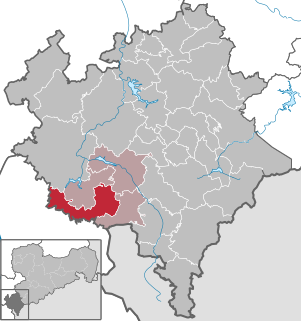
Triebel is a municipality in the Vogtlandkreis district, in Saxony, Germany, situated south of the town of Plauen.

Andreas Kirchner was an East German hammer thrower and bob pusher for record holder Wolfgang Hoppe.
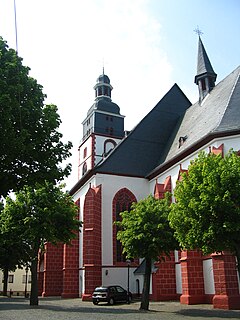
Kirchberg, the Stadt auf dem Berg, called Kerbrich in Moselle Franconian, is a town in the Rhein-Hunsrück-Kreis (district) in Rhineland-Palatinate, Germany. It is the seat of the like-named Verbandsgemeinde, to which it also belongs.
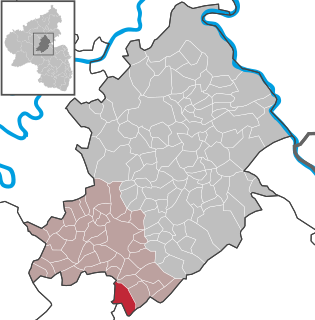
Woppenroth is an Ortsgemeinde – a municipality belonging to a Verbandsgemeinde, a kind of collective municipality – in the Rhein-Hunsrück-Kreis (district) in Rhineland-Palatinate, Germany. It belongs to the Verbandsgemeinde of Kirchberg, whose seat is in the like-named town.

The stony summit Vysoký kámen lies 8 km west of Kraslice in okres Sokolov and 1 km from the German border in the Elstergebirge, part of the Erzgebirge.

Zwickau is a district (Kreis) in the Free State of Saxony, Germany.
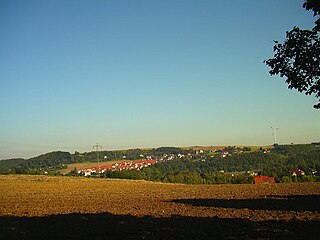
Silberstraße is a formerly independent parish in the German state of Saxony. Since 1999 it has been part of the borough of Wilkau-Haßlau, in the district of Zwickau. It has around 2,000 inhabitants and lies at an elevation of 340 m above sea level (NN). As well as the old village houses it also has a newly built residential area with modern housing units, large industrial estates with textile firms and agricultural concerns.
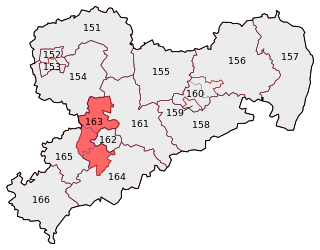
Chemnitzer Umland – Erzgebirgskreis II is one of the 299 single member constituencies used for the German parliament, the Bundestag. One of sixteen constituencies covering the state of Saxony, it contains parts of the Erzgebirgskreis, Mittelsachsen and Zwickau local government districts. The constituency elects one representative under the mixed member proportional representation (MMP) system. Under the current constituency numbering system, it is designated as constituency 163.



























